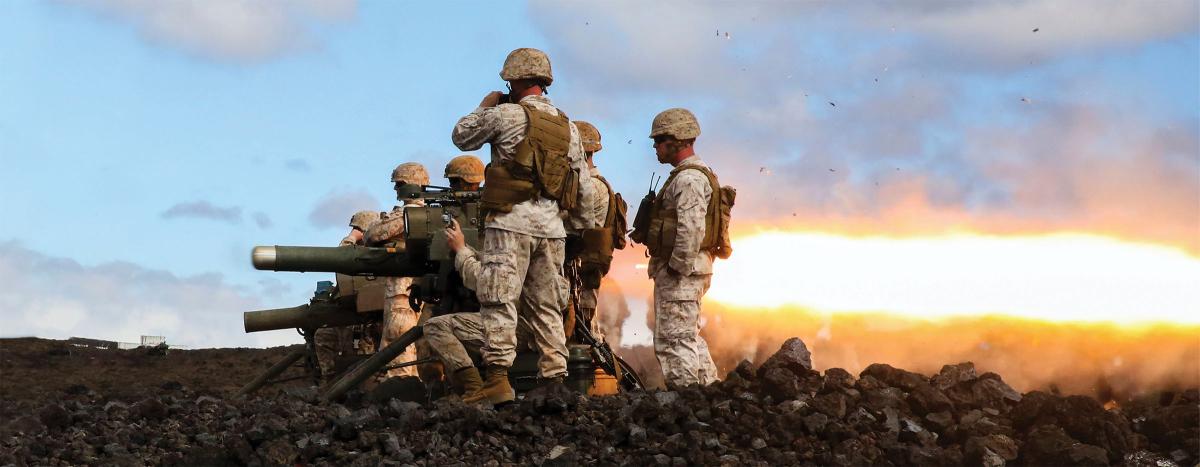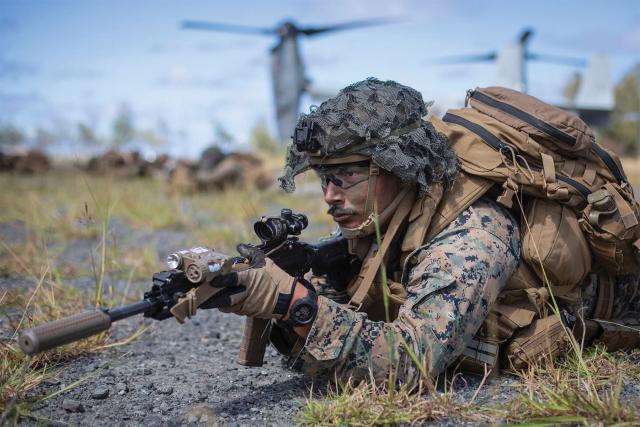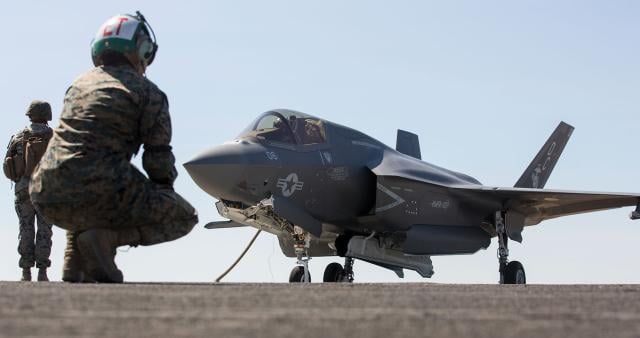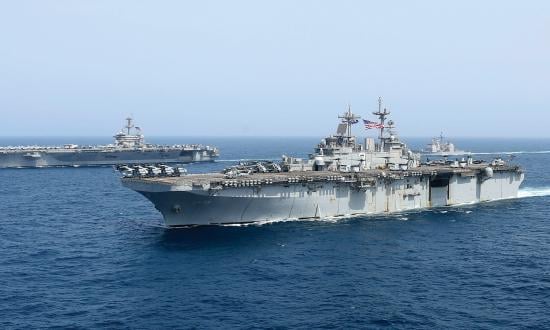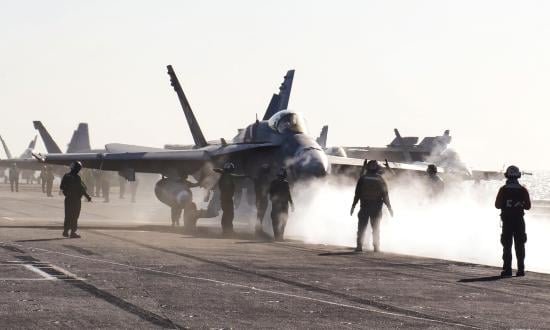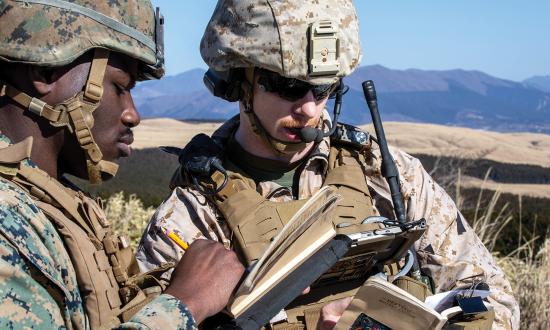Marine Corps Force Design 2030 and its follow-on for constructive experimentation, the Tentative Manual for Expeditionary Advanced Base Operations, call for a radical rethinking of the Marine Corps' structure. The current vision is to employ two littoral combat–focused units—the infantry-centered Marine littoral regiment (MLR) and the 2030 Marine expeditionary unit (MEU). Instead of being infantry-centered, however, the two units should complement each other and be task-tailored to execute the core mission outlined in the Tentative Manual.
As the Marine Corps sees its ability to destroy ships as a future core competency, it has committed to increasing the number of rocket artillery and antiship missile batteries from 7 to 21. This investment is paired with decreasing the number of infantry battalions from 24 to 21, and by modernization initiatives that add organic unmanned aerial vehicle (UAV) systems, loitering munitions, and additional training to make the infantry battalion a more mature, lethal unit. In terms of the primary purpose of the MLR and MEU, the former is a defensive, blunting force that uses stand-off weapons and dispersion to complicate enemy fleet maneuver. The 2030 MEU, by contrast, is an offensive force that allows the combatant commander to commit a significant amount of multidomain combat power to a decisive moment and place in a naval campaign. Despite these divergent operational roles, the Tentative Manual aims to design both the littoral combat team (LCT) component of the MLR and the ground combat element (GCE) element of the 2030 MEU centered on a modernized infantry battalion.
An infantry-centric MEU GCE makes sense, but an infantry-centric LCT will result in a force that falls short of the unit’s intended expeditionary advanced base operational role. Despite significant modernization in munitions and sensors, an infantry battalion that uses manportable missiles, sensors, and crew-served weapons will never possess sufficient range or lethality to be a credible threat against advanced warships and other naval assets. In an austere expeditionary advanced base designed to intercept hostile ships and aircraft or establish expeditionary forward arming and refueling points (FARPs), any personnel that do not operate advanced munitions, crew critical command-and-control nodes, or produce combat aircraft sorties are simply a logistical burden with little utility. For a ship-killing and air power–enabling LCT to be effective, its foundational units must focus on these two tasks: killing ships and refueling and rearming combat aircraft. In the LCT, the infantry community must support the missile artillery and FARP units to ensure they best employ their sensors, weapons, and equipment.
Focus on Long-Range Fires
The current littoral combat team proposal in the Tentative Manual envisions the following: an infantry-focused battalion task force augmented with missile artillery and engineering assets. The manual directs the LCT to provide the MLR commander with the capability to operate multiple EABs, including those specialized for fires and FARP. However, for a unit tasked to project precision firepower toward the sea and support FARPs, the proposed structure is fundamentally unbalanced. It is designed for an infantry battalion trained to fight in close combat, but the enemy intends to fight from afar. The proposed LCT structure is more suited to repel a landing force on an island, with the missile battery attacking amphibious ships while the infantry battalion closes with and destroys landing parties with small watercraft and vehicles.
Instead, LCTs should be centered on fires and FARP operations as their two main functions. Infantry should be used as a supporting element that provides force protection to EABs in hostile areas. Infantry elements should counter incursions and conduct reconnaissance, while carrying out raids against forces that directly threaten the LCT. To fulfill this role, LCT infantry units should be company-sized and trained to detach squads to platoon-sized elements to protect and defend multiple EABs.
In line with the LCT’s antiship mission, an additional missile-firing battery and reinforced communication platoon need to be added. The additional missile battery will allow the LCT to establish EABs more capable of conducting saturation attacks against air-defense systems, while the reinforced communication platoon will ensure links between dispersed missile batteries and command-and-control nodes. As well, the reinforced communication platoon will ensure the receipt of timely targeting data from external sensors. Further supporting these missions, the FARP company should be transferred from the littoral antiair battalion to the LCT, thereby establishing EABs that can conduct FARP operations.
More Infantry Skills for the LCT
Apart from the ability to close with and destroy the enemy, an infantry core competency is the ability to survive, maneuver, and fight in austere expeditionary environments. Infantry Marines are trained to survive using the gear on their backs and to conduct large-scale tactical operations on foot with limited motorized support. While offensive infantry operations in an LCT may be less common, the grit and ability to sustain a fight in austere conditions is a skill that will be critical in EAB operations.
When logistics are contested, EABs will not be guaranteed a consistent supply of fuel, food, water, and other essential supplies. The Navy is now addressing logistics in contested environments by exploring the utility of unmanned semisubmersible vessels, such as those used by drug smugglers. Regardless of potential innovations, however, EABs must be prepared to live without all but the most critical supplies while sustaining credible combat power. For EAB operations to be effective, infantry skills will be essential in the various LCT units. This will enable teams to live and fight in increasingly austere field conditions.
Moreover, austere bases inside an enemy’s weapon engagement zone significantly raise the risk of raids and seizure attempts by hostile amphibious forces. For a reinforced platoon-sized EAB to deter and repel such attempts, even non-infantry Marines assigned to LCTs must train with a renewed emphasis on combat skills. Methods to achieve this goal could include establishing intermediate career courses at the School of Infantry for noncommissioned and staff noncommissioned officers with a focus on coordinating EAB defensive operations. Austere logistics and EAB defensive operations problems could be added to training that certifies an LCT to deploy. And infantry “tactical advisor” billets could be established in non-infantry LCT units. These initiatives will allow for more effective employment of Marines in a tactical environment while facilitating unit-level infantry training.
Reserve the Infantry for Decisive Action
The transition of an LCT from an infantry-centric to a fires-centric force does not mean the infantry is obsolete in a future fight in the Pacific. An LCT designed around fires, aviation support, and austere operations does not provide the combatant commander with critical options to wrest islands from enemy control, nor does it give the commander an ability to repel a hostile landing force. While a fires-based LCT may sway a naval campaign by projecting significant combat power seaward and blunting enemy offensive capabilities, an infantry-based MEU GCE will be critical to secure not only island objectives, but also urban areas in the Indo-Pacific.
The Marine infantry battalion’s restructuring and investments in organic UAS, electronic warfare, and organic precision fires move the force in the right direction. They will allow a battalion to detect, strike, and destroy enemies from longer distances, as well as ensure combat superiority in close contact. Furthermore, this future infantry battalion, reinforced with precision missile artillery, long-range unmanned surface vessels, more capable MEU aviation combat elements, and technologically advanced MEU logistics combat elements, will constitute a formidable force capable of decisively seizing objectives.
Fires-Centric MLR Is Combat Effective
An LCT that centers on deploying fires and FARP EABs will be able to operate more effectively as a stand-in force, blunting and depleting the enemy more proficiently than an infantry-centric LCT. By fielding more antiship missile batteries, the LCT can become a greater threat to hostile fleet assets by saturating their air-defense systems. In addition, an organic FARP company will enable tactical air mobility, as well as support fifth-generation combat aircraft from unexpected locations, to disrupt hostile air-defense plans. If increased missile and combat air sorties cannot neutralize amphibious threats, EABs staffed with Marines with specialized training in defensive operations can repel such incursions. This type of MLR, making use of small EABs supporting each other via detection and fires, will be a lethal and persistent force that can severely hinder enemy fleet maneuver and add significant combat power to friendly fleet forces.
The two types of units in combination will provide a critical ability—the MLR diminishes enemy fleet action, while the 2030 MEU strikes decisively.



